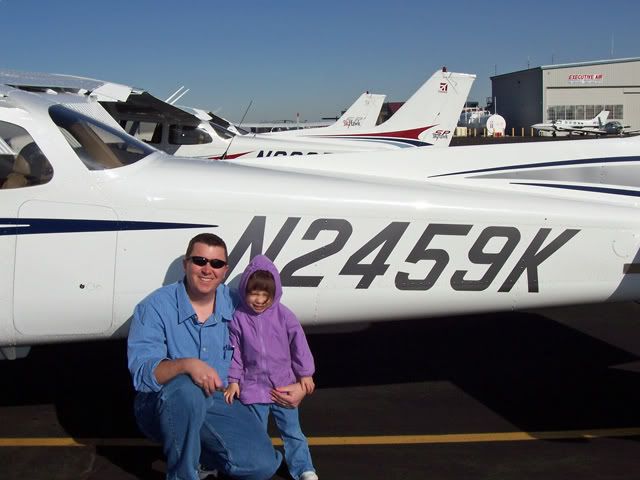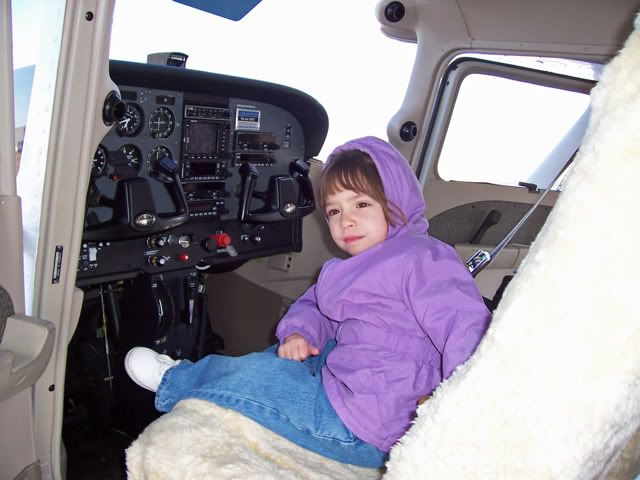Even though I am not flying I still think about flying. Today I got to thinking about what got each of us into flying in the first place. Can you pinpoint a specific event or was it always a lifelong passion? I tend to believe each of us was born with the passion to fly. I know that everyone, especially as children are fascinated with and love airplanes, but what makes some of us go beyond just looking up at an overflying airplanes and go into insurmountable debt to get our rating just so we can work at or near the poverty level for years until building enough time to apply with the big airlines? I know there are a few out there who see it just as a job and a means to pay the bills but I think those types are in the minority.
So what follows is my story. If you would like to share yours or comment on this topic please leave a comment…..
Growing up, my dad worked overseas and traveled a lot. We were either picking him up or dropping him off at the airport. Looking back I felt like I grew up at Stapleton International Airport (the precursor to Denver International). I was destined to either grow up hating airplanes or loving them. Luckily for me it would be the latter. I can still remember the hours spent waiting for my dad, playing with my toy airplanes and watching those magnificent flying machines outside. I wanted so bad to be a pilot and work around airplanes all the time. I even thought the baggage handlers were cool because they were out there right next to the planes and they could even touch them.
My pilot dreams were dashed early. In 5th grade, my mom got a call from my teacher who suggested that I get an eye exam. Seems that I was squinting a lot and he noticed that I had difficulty reading the blackboard. A few weeks later I was the proud owner of eyeglasses and I now had a lifetime of inconvenience to look forward to. At that time things like LASIK or PRK were just a dream. Heck I don’t even remember if they had contacts when I got that first pair of glasses. A visit from the Air Force Academy during 7th grade dashed my dreams for good when I was told that I could not be an Air Force pilot due to my vision. My disappointment blinded me from the fact that getting a degree from the Academy would have been a great accomplishment even without becoming a pilot.
One day during my senior year of high school a friend of mine told me he was taking flying lessons at the local airport. I visited them and learned that they offered discovery flights for $30. I quickly signed up and was hooked after that short flight. My instructor was much kinder towards my dreams than the Air Force Academy recruiter. Instead of snuffing out my dreams like a burning cigarette he told me that I could fly for the airlines even with glasses. My new master plan was to get my license, build time utilizing Air Force flying clubs and then get out and fly for the airlines.
Mom and Dad paid for the flying lessons as a graduation present. The only catch was that I had to have my license by July since I was scheduled to leave for Air Force basic training on July 11th, 1991. That left just over 3 months to get my private pilot license. When I asked if it could be done my instructor told me that it was possible but I would have to be totally committed to the idea and fly as often as I could.
Thanks to some excellent advice from my older sister I had most of my high school requirements met by the end of my junior year. This meant that I only had to go to class in the morning of my senior year. This gave me plenty to time to fly and I did at least 3 times a week. I took that discovery flight on March 31st 1991 and my private pilot check ride on July 9th 1991. My sister was my first passenger on the 10th and I left for Basic Training on the 11th. 100 days and 53.5 flight hours from that discovery flight I was a licensed pilot.
What about that master plan? I’m still working on it; I just took a short detour for an Air Force career. My four years in the Air Force has turned into 16 and still counting.










































































